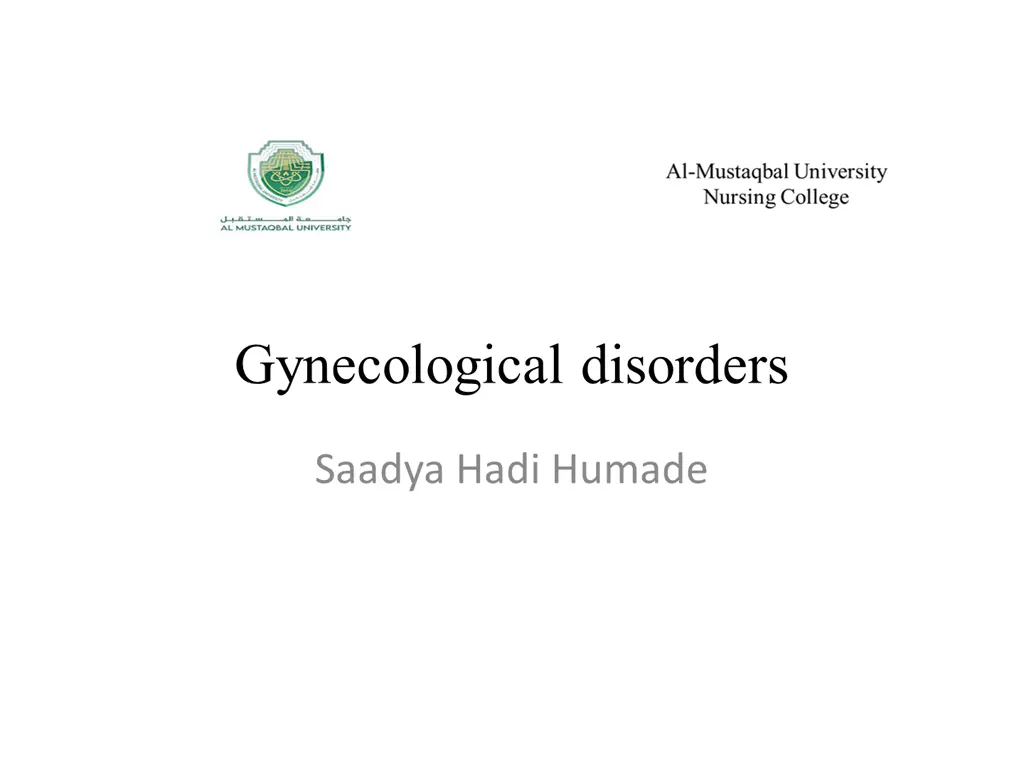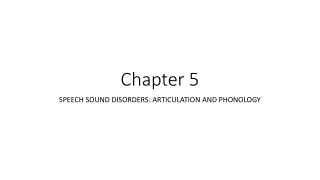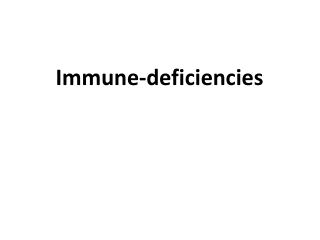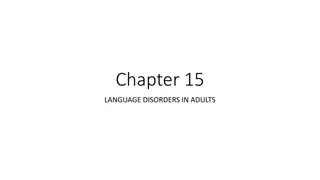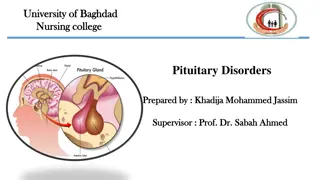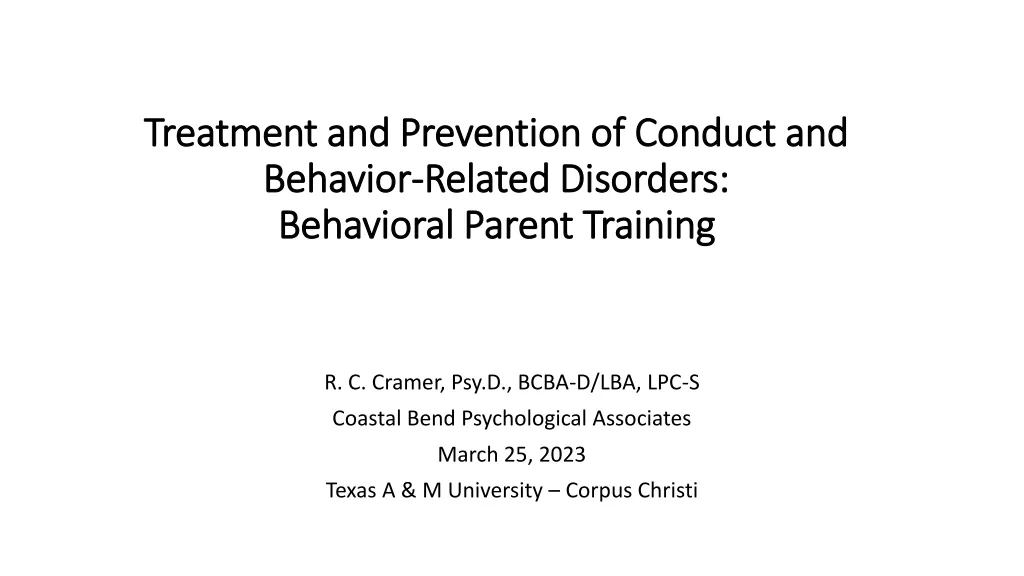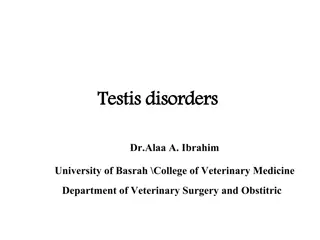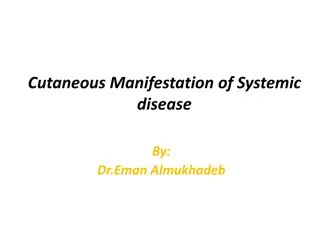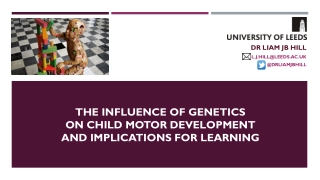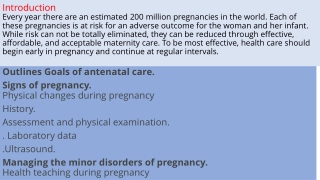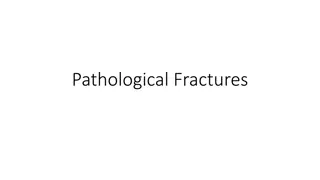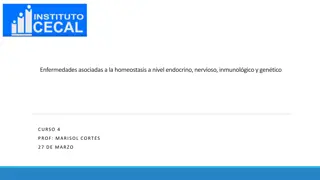Gynecological disorders
Common gynecological disorders including menstrual disorders and abnormal uterine bleeding. Find out about the nursing role in diagnosing and treating these disorders.
Download Presentation
Please find below an Image/Link to download the presentation.
The content on the website is provided AS IS for your information and personal use only. It may not be sold, licensed, or shared on other websites without obtaining consent from the author. Download presentation by click this link. If you encounter any issues during the download, it is possible that the publisher has removed the file from their server.
- gynecological disorders
- menstrual disorders
- abnormal uterine bleeding
- nursing role
- treatment
- amenorrhea
- metrorrhagia
- menorrhagia
- bleeding disorders
- endocrine disorders
Presentation Transcript
Gynecological disorders Saadya Hadi Humade
Menstrual disorders : Menstrual cycle disorders can cause distress for many women. The nursing role in each depends on the disorder s cause and treatment. Common nursing roles involve explaining any recommended treatments (e.g., medications) and caring for the woman, including providing emotional support, before and after procedures. Amenorrhea : Amenorrhea is the absence of menstruation. It is normal before menarche, during pregnancy, and after menopause. Amenorrhea that is not normal may fall into one of two categories: Primary: Failure to menstruate by age 16 years; failure to menstruate by age 14 years if she has not developed any secondary sex characteristics Secondary: Cessation of menstruation for at least three cycles or 6 months in a woman who previously had an established pattern of menstruation
Treatment of amenorrhea : 1. begins with a thorough history, physical examination, and laboratory examinations to identify the cause. 2. Pregnancy testing is completed for any sexually active woman. 3. The specific treatment depends on the cause that is identified. 4. For example, adolescents who are obese may have polycystic ovaries, and women who are very thin or have a low percentage of body fat may experience amenorrhea, because fat is necessary for estrogen production. 5. This group of women may include athletes but may also include patients who have eating disorders, such as anorexia or bulimia. 6. Therapy for the eating disorder may result in the resumption of normal periods. Other treatments are aimed at correcting the cause, which may be an endocrine imbalance.
Abnormal uterine bleeding : Abnormal uterine bleeding is defined as being (1)too frequent, (2) too long in duration, or (3) excessive in amount. Metrorrhagia(intermenstrual bleeding) is uterine bleeding that is usually normal in amount but occurs at irregular intervals. Menorrhagia : refers to menstrual bleeding that is excessive in amount. The average woman loses about 35 mL of blood during normal menstruation. Blood loss greater than 80 mL/month is considered excessive and often results in anemia. Heavy menstrual bleeding is manifested by soaking through a menstrual pad or tampon within 1 hour, for several hours; passing clots the size of a quarter; and a gushing sensation often leaking through protection.
Common causes for any type of abnormal bleeding include: Bleeding disorders Pregnancy complications, such as an unidentified pregnancy that is ending in spontaneous abortion Lesions of the vagina, cervix, or uterus (benign or malignant) Breakthrough bleeding (BTB), which may occur in the woman taking oral contraceptives Endocrine disorders, such as hypothyroidism Failure to ovulate or respond appropriately to hormones secreted with ovulation (dysfunctional uterine bleeding)
Treatment of abnormal uterine : bleeding depends on the identified cause. Pregnancy complications and benign or malignant lesions are treated appropriately. BTB may be relieved by a change in the oral contraceptive used. Abnormal hormone secretion is treated with the appropriate medications. Surgical dilation and evacuation (D&E) may serve to remove intrauterine growths or aid in diagnosis. Hysterectomy may be performed for some disorders if the woman does not desire additional children. A technique called laser ablation can permanently remove the abnormally bleeding uterine lining without a hysterectomy. Menorrhagia can be treated with mefenamic acid (a nonsteroidal antiinflammatory drug [NSAID]) or tranexamic acid (an antifibrinolytic) if hormone therapy is contraindicated. NSAIDs reduce menstrual flow by 30% to 50% when taken daily during menstruation.
Menstrual cycle pain Mittelschmerz : Mittelschmerz ( middle pain ) is pain that many women experience around ovulation, near the middle of their menstrual cycle. Mild analgesics are usually sufficient to relieve this discomfort. The nurse can teach the woman that this discomfort, although annoying, is harmless. Dysmenorrhea Dysmenorrhea (painful menses or cramps) affects many women. It occurs soon after the onset of menses and is spasmodic in nature. Discomfort is in the lower abdomen and may radiate to the lower back or down the legs. Some women also have diarrhea, nausea, and vomiting. It is most common in young women who have not been pregnant (nulliparas). There are two types of dysmenorrhea: primary, in which there is no evidence of pelvic abnormality, and secondary, in which a pathological condition is identifiable. Primary dysmenorrhea is a leading cause of short-term, recurrent school absenteeism in
Characteristics include: Onset occurs shortly after menarche with heavy menstrual flow. Pain begins no more than a few hours before menstruation starts and lasts no more than 72 hours. Pelvic examination results are normal.
Secondary dysmenorrhea : most commonly results from endometriosis, the use of an intrauterine device (IUD) to prevent pregnancy, pelvic inflammatory disease, uterine polyps, or ovarian cysts. Treatment involves identifying and treating the cause. Vasopressins and prostaglandins from the endometrium (uterine lining) play an important role in dysmenorrhea. Some women produce excessive amounts of prostaglandins from the endometrium, and these substances are potent stimulants of painful uterine contractions. Three treatments may provide relief: 1. Prostaglandin-inhibitor drugs, such as ibuprofen (Motrin, Advil) or naproxen (Naprosyn, Anaprox) (Prostaglandin inhibitors are most effective if taken before the onset of menstruation and cramps.) 2. Heat application to the lower abdomen or back 3. Oral contraceptives, which reduce the amount of endometrium buildup each month and therefore reduce prostaglandin secretion.
Endometriosis: Endometriosis is the presence of tissue that resembles endometrium outside the uterus. This tissue responds to hormonal stimulation just as the uterine lining does. The lesions may cause pain, pressure, and inflammation to adjacent organs as they build up and slough during menstrual cycles. Endometriosis causes pain in many women that is either sharp or dull. It is more constant than the spasmodic pain of dysmenorrhea. Dyspareunia (painful sexual intercourse) may be present. Endometriosis appears to cause infertility in some women. Treatment of endometriosis may be either medical or surgical. Medications such as danazol and agonists of gonadotropin-releasing hormone (GnRH) may be administered via nasal spray to reduce the buildup of tissue by inducing an artificial menopause. Lupron, given intramuscularly (IM), is also effective. The woman may have hot flashes and vaginal dryness, similar to symptoms occurring at natural menopause. She is also at increased risk for other problems that occur after menopause, such as osteoporosis and serum lipid changes.
Surgical treatment includes: Hysterectomy with removal of the ovaries and all lesions if the woman does not desire another pregnancy Laser ablation (destruction) of the lesions if she wants to maintain fertility Endometriosis has no effect on pregnancy, once pregnancy has been achieved .
Premenstrual disorders : Premenstrual syndrome (PMS), and the more serious premenstrual dysphoric disorder (PMDD), are associated with an abnormal serotonin response to normal changes in the estrogen levels during the menstrual cycle. The following symptom criteria (which are used to diagnose PMDD) occur between ovulation and the onset of menstruation, begin to improve between the menstruation and ovulation phases, and are not present in the week after the menstrual period. Five or more of the following symptoms usually occur regularly: Depressed mood Anxiety, tension, feeling on edge Increased sensitivity to rejection Irritability Decreased interest in usual activities Difficulty in concentrating Lethargy Change in appetite food cravings Change in sleep habits Feeling overwhelmed Physical symptoms, such as breast tenderness, bloating, weight gain, headaches
The diagnosis : is often based on an established pattern throughout more than 3 months. Treatment includes a diet rich in complex carbohydrates and fiber (to lengthen the effects of the carbohydrate meal), stress management, and exercise. Medical management includes oral contraceptives (low estrogen, progestin dominant), diuretics during the luteal phase of the menstrual cycle (between ovulation and the onset of menstruation), and NSAIDs. Patient education concerning maintenance of a monthly calendar of symptoms, stress management, and dietary guidance are important concepts for the nurse to teach. Reduction of caffeine, simple sugars, and salty foods, regular exercise, and prevention of hypoglycemia are important lifestyle changes. Selective serotonin reuptake inhibitors (SSRIs), such as fluoxetine (Prozac) or sertraline (Zoloft), or short-acting antianxiety drugs, such as alprazolam (Xanax), may be initiated 2 weeks before menses and discontinued when menses begins. Remission usually occurs during the follicular stage, with no signs and symptoms the week after menses. Complementary and alternative medicine (CAM) therapies have been used to provide relief
Gynecological infections : Vaginal infections are the most common reason for women to seek health care. Nurses play a key role in educating women concerning vaginal health and the prevention of sexually transmitted infections. Identifying high-risk behaviors and providing nonjudgmental, sensitive counseling and education should be part of every physical checkup. Safe sex practices, a reduction in the number of partners, and avoiding the exchange of body fluids are part of the primary prevention of STIs. Community-based education in schools and churches is also important in primary prevention. There are three classes of gynecological infections: Toxic shock syndrome Sexually transmitted infections Pelvic inflammatory disease
Toxic shock syndrome Toxic shock syndrome (TSS) is a rare and potentially fatal disorder. It is caused by strains of Staphylococcus aureus that produce toxins that can cause shock, coagulation defects, and tissue damage if they enter the bloodstream. TSS is associated with the trapping of bacteria within the reproductive tract for a prolonged time. Factors that increase the risk of TSS include the use of high absorbency tampons for prolonged periods of time and the use of a diaphragm or cervical cap for contraception, especially after childbirth. Signs and symptoms of TSS include: Sudden spiking fever Flulike symptoms Hypotension Generalized rash that resembles sunburn Skin peeling from the palms and soles 1 to 2 weeks after the illness The incidence of TSS has decreased, but nurses continue to play a role in prevention.
The incidence of TSS has decreased, but nurses continue to play a role in prevention. The nurse s role is primarily one of education. The following teaching points should be included: Tampon use: 1. Perform hand hygiene before and after inserting a tampon. 2. Change tampons at least every 4 hours. 3. Do not use superabsorbent tampons. 4. Use pads rather than tampons when sleeping, because tampons will likely remain in the vagina longer than 4 hours. Diaphragm or cervical cap use: 1. Wash hands before and after inserting the diaphragm or cervical cap. 2. Do not use a diaphragm or cervical cap during the menstrual period or for 8 weeks after childbirth. 3. Remove the diaphragm or cervical cap at the time recommended by the health care provider. 4. Treatment is supportive and includes hospitalization for administration of vasopressor drugs, antimicrobial medication, and fluid replacement.
Sexually transmitted infections : STIs are infections that can be spread by sexual contact, although several of them also have other modes of transmission. It is important that all sexual contacts of the infected person, even those who are asymptomatic, be completely treated to eradicate the infection. provides specific information about STIs that the nurse may encounter. Certain STIs must be reported to the health department. Sexually Transmitted Infections
Nursing care related to STIs primarily focuses on patient education to prevent the spread of these infections; it includes: Teaching signs and symptoms that should be reported to the health care provider Explaining diagnostic tests Teaching measures to prevent the spread of infection, such as the use of condoms Explaining treatment measures Emphasizing the importance of completing treatment and follow-up and of treating all partners to eliminate the spread of infection The incidence of STIs has increased during the past few decades. Teaching STI prevention to women across the life span is important, because some viral STIs remain in the body for life and can include long-term complications. Human papillomavirus is the most common viral STI, with more than 100 variations. HPV types 16 and 18 are associated with serious cervical cancer, and women who are immunocompromised are at the greatest risk. The use of condoms may not protect the woman if the male s lesion is on the scrotum or inguinal folds. It may take 3 to 6 months after infection to develop visible warts.
Treatment includes cryotherapy, laser vaporization, electrodiathermy, and electrofulguration with a loop electrode excision procedure. Topical agents are used and lidocaine cream may be used 20 minutes before painful treatments. The Centers for Disease Control and Prevention (CDC) recommends a vaccination series for all males and females between the ages of 11 26 to prevent the most common strains of HPV.
Pelvic inflammatory disease : Pelvic inflammatory disease is an infection of the upper reproductive tract. Asymptomatic STIs are a common cause of PID. The cervix, uterine cavity, fallopian tubes, and pelvic cavity are often involved. Infertility may be the result. The woman s symptoms vary according to the area affected. Fever, chronic pelvic pain, abnormal vaginal discharge, nausea and anorexia, and irregular vaginal bleeding are common. When examined, the abdomen and pelvic organs are often very tender. Laboratory tests identify common general signs of infection, such as elevated leukocytes and an elevated sedimentation rate. Cultures of the cervical canal are done to identify the infecting organism, which most commonly is N. gonorrhoeae or Chlamydia trachomatis.
Urinalysis is usually done to identify infection of the urinary tract. The pelvic inflammation can result in scarring of the fallopian tubes that can cause blockage and infertility or ectopic pregnancy. Treatment includes antibiotics and patient education to prevent reinfection. Treatment may be administered on an inpatient or outpatient basis, depending on the severity of the infection. Antimicrobials are begun promptly to treat the infection. Douching results in changes in the vaginal flora and predisposes the woman to the development of PID, bacterial vaginosis, and ectopic pregnancies. However, many women practice regular douching in the belief that it is cleansing. The nurse can play an important role in educating the woman to prevent PID.
